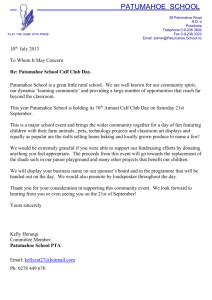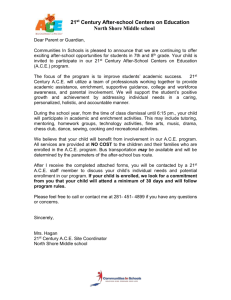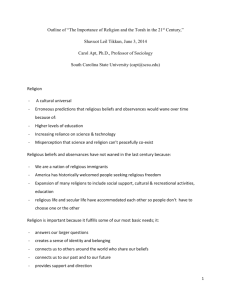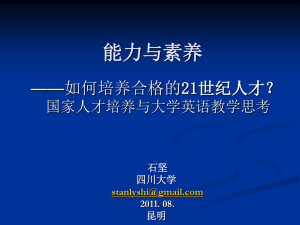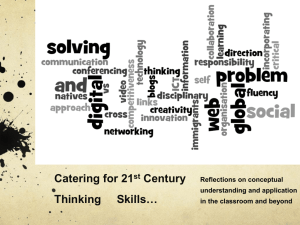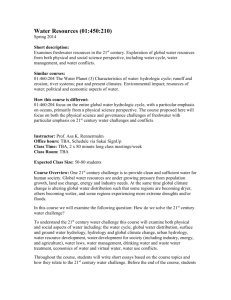Why we need 21st century skills: Skills such as problem solving
advertisement
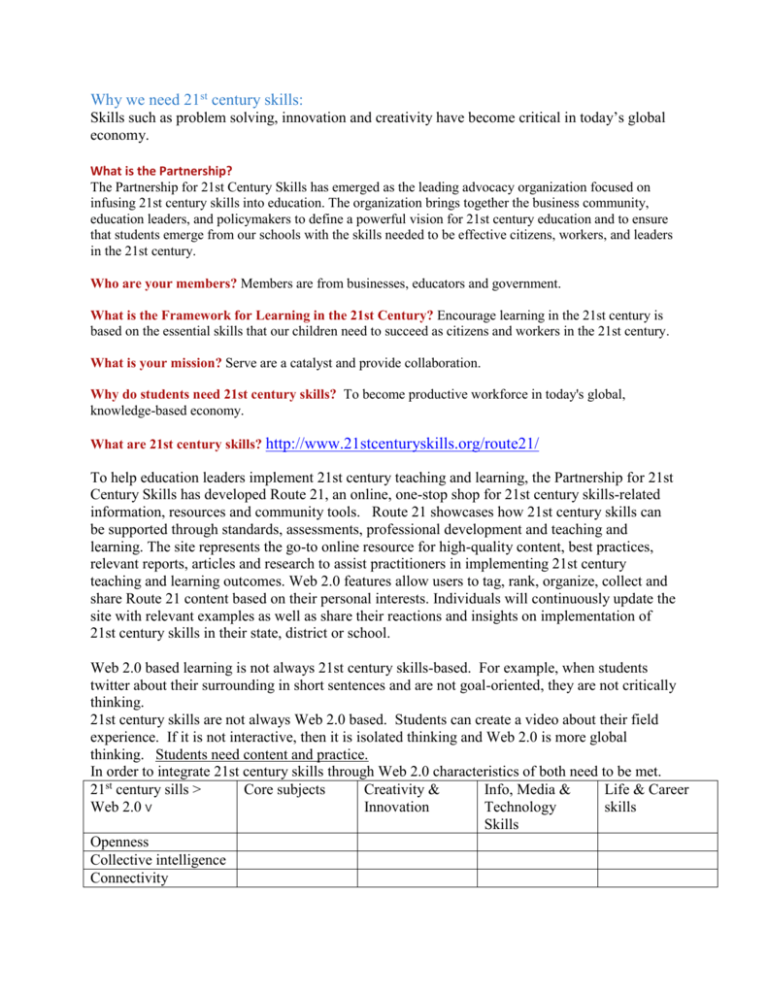
Why we need 21st century skills: Skills such as problem solving, innovation and creativity have become critical in today’s global economy. What is the Partnership? The Partnership for 21st Century Skills has emerged as the leading advocacy organization focused on infusing 21st century skills into education. The organization brings together the business community, education leaders, and policymakers to define a powerful vision for 21st century education and to ensure that students emerge from our schools with the skills needed to be effective citizens, workers, and leaders in the 21st century. Who are your members? Members are from businesses, educators and government. What is the Framework for Learning in the 21st Century? Encourage learning in the 21st century is based on the essential skills that our children need to succeed as citizens and workers in the 21st century. What is your mission? Serve are a catalyst and provide collaboration. Why do students need 21st century skills? To become productive workforce in today's global, knowledge-based economy. What are 21st century skills? http://www.21stcenturyskills.org/route21/ To help education leaders implement 21st century teaching and learning, the Partnership for 21st Century Skills has developed Route 21, an online, one-stop shop for 21st century skills-related information, resources and community tools. Route 21 showcases how 21st century skills can be supported through standards, assessments, professional development and teaching and learning. The site represents the go-to online resource for high-quality content, best practices, relevant reports, articles and research to assist practitioners in implementing 21st century teaching and learning outcomes. Web 2.0 features allow users to tag, rank, organize, collect and share Route 21 content based on their personal interests. Individuals will continuously update the site with relevant examples as well as share their reactions and insights on implementation of 21st century skills in their state, district or school. Web 2.0 based learning is not always 21st century skills-based. For example, when students twitter about their surrounding in short sentences and are not goal-oriented, they are not critically thinking. 21st century skills are not always Web 2.0 based. Students can create a video about their field experience. If it is not interactive, then it is isolated thinking and Web 2.0 is more global thinking. Students need content and practice. In order to integrate 21st century skills through Web 2.0 characteristics of both need to be met. 21st century sills > Core subjects Creativity & Info, Media & Life & Career Web 2.0 V Innovation Technology skills Skills Openness Collective intelligence Connectivity Credits and Links: http://www.slideshare.net/hgtuttle/digital-age-assessmentassessing-web-20-learning http://www.amphi.com/schools/donaldson/teacherres/21st.html http://eduwithtechn.wordpress.com/2009/07/13/21st-century-skillslearning-and-web-2-0/ http://www.edutopia.org/east-technology-lab-video (longer video) EAST -- A Way Forward: Tech Inspires Self-Directed Learning http://www.edutopia.org/east-technology-lab-student-teacher-video Going EAST: Student and Teacher POVs Web 2.0 tools and links: Google: http://www.google.com/intl/en/options/ Google help: http://www.google.com/support/bin/static.py?page=portal_more.cs Web 2.0 Users: http://google.about.com/b/ http://www.c4lpt.co.uk/recommended/lissalord.html Links to study tools http://quizlet.com/778869/the-department-flash-cards/ http://jingproject.com/ http://www.studystack.com/menu-206844 Interactivity (List created by Linda Wapelhorst) http://lindaw.glogster.com/sidlit/ Useful blogs: http://itfieldproject.blogspot.com http://mplenahan.blogspot.com


